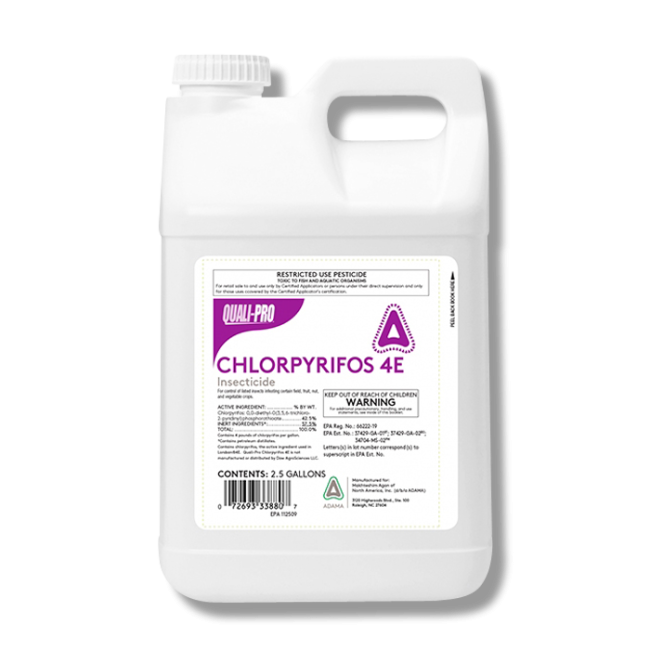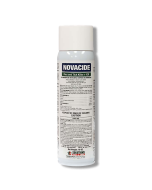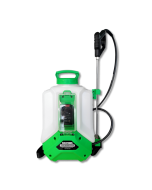Gain access to personalized product screening, the best pricing, rewards, and more!







application2
Chlorpyrifos 4E Insecticide
Chlorpyrifos 4E Insecticide is a professional-grade insecticide that controls many insect types, including aphids, leafrollers, and other crop-destroying pests, within various types of croplands.
This product is a Restricted Use Product (RUP) and requires a Certified Applicator's License to purchase.
Chlorpyrifos 4E Insecticide, manufactured by Quali-Pro, is a specially formulated insecticide that treats Christmas tree farms, citrus trees, vegetable plants, and more from various pests.
The active ingredient, Chlorpyrifos 42.5% causes targeted insects to stop eating by disrupting their nervous system. It controls over 100 different insects including gypsy moths, mole crickets, cutworms, aphids, and more.
Chlorpyrifos 4E Insecticide can be applied with different types of spray equipment to treat vegetation of all sizes.
Tools Needed
The type of application equipment needed depends on the type of crop being treated. To apply Chlorpyrifos 4E a backpack sprayer, handheld pump sprayer, professional skid sprayer or the proper sprinkler system is needed. Refer to the product label to ensure the proper equipment is being used. When treating small transplanted grapefruit, orange, and other citrus trees in Texas, we recommend using a backpack sprayer.
How to Use
- Step 1: Determine how much Chlorpyrifos 4E Insecticide to use by measuring the square footage of the treatment area. To find the square footage, measure the treatment area's length and width in feet, then multiply them together (square footage / 43,560 sq. ft. = acres). For acreage, divide the square footage by one acre (square footage / 43,560 sq. ft. = acres). To treat ornamentals around industrial buildings and road medians, apply 1 pint to 1 quart of Chlorpyrifos 4E Insecticide per 100 gallons of water per acre. Refer to the label for specific application rates and restrictions.
- Step 2: To make spray applications with a professional skid sprayer, begin by filling the spray tank with 1/3 or 1/4 of the required amount of water and then begin the agitation process.
- Add the correct amount of product to the spray tank and the remaining water while continuing the agitation process.
- Step 3: Make uniform applications to all areas that require treatment and keep the agitation process going until the application process is complete.
- Step 4: The number of applications that can be made varies depending on the type of crop being treated. Read the product label for details on when to reapply.
Where to Use
Chlorpyrifos 4E Insecticide is formulated to treat various types of Christmas trees, citrus trees, nut trees, vegetable plants, and fruit plants. It can also be applied to golf course turfs, industrial turfs, road medians, and various outdoor and nursery kept ornamental plants and trees. Chlorpyrifos 4E can be applied to apple and cherry tree trunks, asparagus, corn fields, and more.
Do not apply to bodies of water and do not apply to crops where bees are foraging. Some vegetation requires soil treatments so that the insecticide is not directly applied to the foliage of the plants.
When to Use
This product can be applied at various times, depending on the crop. This insecticide is ideal for farmers to protect crops from being destroyed by various insects.
For most crops, do not apply more than 3 to 4 times a year and wait at least 7 to 10 days before reapplying when treating areas with heavy infestations.
Safety Information
Chlorpyrifos 4E Insecticide is safe to use when applied according to the product label instructions. Always wear the proper personal protective equipment (PPE) when mixing and applying this product.
Do not allow people or pets to enter for the following days for the specific application sites:
4 days for fruit trees.
5 days for citrus.
3 days for cauliflower.
24 hours for all other crops not listed above.
Special Considerations
Chlorpyrifos 4E has a broad label, as it can be applied to various types of crops to control various types of insects and different rates. For maximum results, read the label before applying.
| Restricted Use | Yes |
|---|---|
| Shipping Restrictions | AK, CA, CT, IL, KS, MA, MD, ME, MI, NY, OR, VT |
| Availability | Online |
| Signal Word | WARNING |
| Keith's Pro Tip | "The type of targeted pests being controlled will ultimately determine the best time to make applications of Chlorpyrifos 4E. For instance, when treating plants to kill leafrollers, it is best to make applications before the leaves are completely rolled up. When controlling bagworms, apply insecticide when the larvae are small and currently feeding." |
| Target Pests Multi | Adelgids, Alfalfa Blotch Leafminer, Alfalfa Looper, Alfalfa Weevil, Alfalfa Weevil Larvae, Ambrosia Beetle, American Cockroaches, American Dog Ticks, American Plum Borers, Annual Bluegrass Weevil, Anobiidae Beetle, Ants, Aphids, Apple Aphid, Apple Ermine Moth, Army Cutworm, Armyworms, Asian Cockroaches, Asparagus Beetle, Bagworms, Banded Sunflower Moth, Bean Leaf Beetle, Beet Armyworms, Bermudagrass Stunt Mites, Billbugs, Black Margined Aphid, Black Pecan Aphid, Black Pine Scale, Black Scale, Black Turfgrass Ataenius, Black Turfgrass Ataenius Grubs, Black Turpentine Beetles, Black Vine Weevil, Blister Leaf Beetles, Bluegrass_Billbug, Boll Weevil, Borers, Boxelder Bugs, Brown Banded Cockroaches, Brown Soft Scales, Brown Spanworm, Brown Tail Moth, Brown Wheat Mite, Cabbage Aphid, California Oakworms, California Red Scale, Cankerworms, Catalpa Sphinx, Cattle Fever Ticks, Chaff Scale, Chiggers/Red Bugs, Chinch Bugs, Chrysanthemum Aphid, Citrus Rust Mite, Climbing Cutworms, Clover Mites, Codling Moths, Coffee Root Mealybug, Common Stalk Borer, Conderus Wireworm, Cooley Adelgids, Corn Earworm, Corn Rootworm, Corn Rootworm Larvae, Cotton Aphid, Cotton Budworm, Cotton Fleahopper, Cottonwood Aphid, Cottonwood Borer, Cottonwood Leaf Beetle, Cottony Maple Scale, Cottonycushion Scale, Cranberry Girdler Larvae, Cranberry_Fruitworms, Cranberry_Weevils, Crickets, Cutworms, Cutworm_Larvae, Cypress Tip Moth, Deer Ticks, Denver Billbug, Douglas Fir Tussock Moth, Dried Fruit Beetles, Earwigs, Eastern Spruce Budworms, Eastern Spruce Gall Adelgid, Eastern Tent Caterpillar, Egyptian Alfalfa Weevil, Egyptian Alfalfa Weevil Larvae, Elm Leaf Aphid, Elm Leaf Beetles, Elm Spanworm, English Grain Aphid, Euonymus Scale, European Chafer Grubs, European Corn Borer, European Crane Fly, European Crane Fly Larvae, European Elm Bark Beetle, European Pine Sawflies, European Pine Shoot Moth, European Red Spider Mite, Eyespotted Bud Moth, Fall Armyworms, Fall_Webworms, Fiery Skipper, Filbert Aphids, Filbert Leafrollers, Filbert Worms, Fire Ants, Fireworms, Flea Beetle, Flea Beetle Larvae, Fletcher Scale, Florida Red Scale, Florida Wax Scale, Foliar-feeding Beetles, Forest Tent Caterpillar, Fruit Tree Leafroller, Fuller Rose Beetle, German Cockroaches, Gnats, Golden Oak Scale, Grape Root Borer, Grasshoppers, Greater Peach Tree Borer, Green Cloverworm, Green Fruitworms, Green June Beetle Grubs, Greenbugs, Gulf Coast Ticks, Gypsy Moth, Hemispherical Scale, Hickory Shuckworms, Holly Bud Moth, Hunting Billbug, Imported Cabbageworms, Jackpine Budworm, Japanese Beetle, Japanese Beetle Larvae, Jeffrey Pine Needleminer, June Beetles, Juniper Webworms, Katydids, Lace Bugs, Lawn Moths, Leafhoppers, Leafminers, Leafrollers, Lecanium Scale, Lepidopterous Larvae, Lesser Cornstalk Borer, Lesser Peach Tree Borer, Locust Borer, Lodgepole Pine Needleminers, Lone Star Ticks, Long Scale, Longhorned Beetles, Lucerne Moth, Lygus Bugs, Magnolia Scale, Mahogany Webworms, Maple Leafcutter, Mealy Plum Aphid, Mealybugs, Mexican Bean Beetles, Millipedes, Mimosa Webworm, Mirids, Mites, Mole Cricket Larvae, Mole Crickets, Nantucket Pine Tip Moth, Native Elm Bark Beetle, Navel Orangeworms, Northern Masked Chafer Grubs, Oak Kermes Scale, Oak Lacanium Scale, Obliquebanded Leafroller, Oleander Caterpillar, Omnivorous Leaftier, Onion Maggot, Orange Striped Oakworm, Orange Tortrix, Orange Wheat Blossom Midge, Orangedog, Oriental Cockroaches, Oystershell Scale, Pales Weevil, Pandemis Leafroller, Pandora Moth, Pavement Ants, Peach Aphid, Peach Tree Borers, Peach Twig Borer, Pear Psylla, Pecan Leaf Scorch Mite, Pecan Nutcasebearers, Periodical Cicadas, Phylloxera, Pillbugs, Pin Oak Sawfly, Pine Bark Adelgids, Pine Needle Midge, Pine Needle Scale, Pine Production Weevils, Pine Sawfly, Pine Spittlebug, Pine Tortoise Scale, Pink Bollworm, Pitch Pine Tip Moth, Plant Bugs, Psyllids, Purple Scale, Puss Caterpillar, Red Oak Borer, Red Spider Mites, Redheaded Sawfly, Redhumped Caterpillar, Redhumped Oakworm, Root Aphid, Root Maggot, Rose Aphid, Rose Chafers, Rosy Apple Aphid, Russian Wheat Aphid, Salt Marsh Caterpillars, San Jose Scales, Sawflies, Scales, Seed Maggot, Seed Weevil, Smoky Brown Cockroaches, Snow Scale, Sod Webworms, Sorghum Midge, Southern Corn Leaf Beetle, Southern Green Stink Bug, Southern Masked Chafer Grubs, Southern Pine Beetle, Southern Red Mites, Southwestern Corn Borer, Sowbugs, Soybean Aphid, Spider Mites, Spider Mites Eggs, Spirea Aphid, Spittlebugs, Spotted Cucumber Beetle, Spring Elm Caterpillars, Springtails, Spruce Bud Scale, Spruce Budworm, Spruce Needleminer, Spruce Spider Mites, Stem Weevil, Strawberry Bud Weevils, Strawberry Clippers, Strawberry Crown Moth, Striped Flea Beetle, Striped Pine Scale, Subtropical Pine Tip Moth, Sugar Beet Root Maggot, Sugar Beet Root Maggot Larvae, Sunflower Beetle, Sunflower Beetle Larvae, Sunflower Moth, Sweet Potato Flea Beetle, Systena Flea Beetle, Tarnished_Plant_Bugs, Tea Scale, Thorn Bug, Thrips, Ticks, Tobacco Budworm, Turfgrass Weevil, Tussock Moth, Two Spotted Spider Mite, Velvet Bean Caterpillars, Walnut Caterpillar, Walnut Husk Flies, Walnut Scale, Webworms, Western Beancutworms, Western Spruce Budworm, Western Tussock Moth, Wheat Midge, White Birch Scale, White Grubs, White Peach Scale, Whiteflies, Willow Leaf Beetles, Winter Grain Mites, Winter Moth, Wireworm Larvae, Wireworms, Wood Cockroaches, Wood-Infesting Beetles, Woolly Aphid, Woolly Bear Caterpillar, Yellow Pecan Aphid, Yellow Poplar Weevil, Yellow Striped Armyworm, Yellow Sugar Cane Aphid, Yellownecked Caterpillar |
| Time to Kill | Chlorpyrifos 4E Insecticide provides a quick knockdown and will begin to kill targeted pests within 24 to 48 hours depending on the severity of the infestation. |
| Chemical Type | Insecticide |
| Formulation | Emulsifiable Concentrate (EC) |
| Application Methods | Broadcast Spray, Spot Treatment |
| Product Drawbacks | Chlorpyrifos 4E is not recommended for residential lawns. When treating residential lawns for insects we recommend Bifen L/P Granules. |
| Active Ingredient | Chlorpyrifos 42.5% (RUP) |
| Application Equipment | Backpack Sprayer, Gloves, Pump Sprayer, Spray Rig |
| Mix Rate | Typically it will be 8 to 16 ounces mixed with 100 gallons or one ounce per 1 gallon. For more specific application rates please refer to the label. |
| Use Sites | Outdoors |
| Yield | The coverage area of Chlorpyrifos 4E Insecticide varies on application site and targeted pest, please see the product label attached for specifications. |
| EPA Registration No. | 66222-19 |
| Shelf Life | Chlorpyrifos 4E will last for up to 1 to 2 years when stored according to the product label. Store Chlorpyrifos 4E in a cool, dry storage area. |
| Comparable Products | Lorsban 75WG Insecticide, Dursban Insecticide |
| Children or pets? | No |
| Property Characteristics | None |
| Availability | Online |
| Restricted Use | Yes |
| Brand | QUALI-PRO |
| Keith's Pro Tips | "The type of targeted pests being controlled will ultimately determine the best time to make applications of Chlorpyrifos 4E. For instance, when treating plants to kill leafrollers, it is best to make applications before the leaves are completely rolled up. When controlling bagworms, apply insecticide when the larvae are small and currently feeding." |
| Product Drawbacks | Chlorpyrifos 4E is not recommended for residential lawns. When treating residential lawns for insects we recommend Bifen L/P Granules. |
| Target Pests | Adelgids, Aemyworms, Alfalfa Blotch Leafminer, Alfalfa Looper, Alfalfa Weevil, Ambrosia Beetles, American dog Ticks, Annual Bluegrass Weevil, Anobiidae Beetles, Ant Species, Ants, Aphids, Apple Aphids, Apple Ermine Moth, Army Cutworms, Armyworms, Ash Moths, Ataenius Adults, Avocado Leafroller, Bagworms, Banded Sunflower Moth, Beet Armyworm, Beetles, Bermudagrass Stunt Mites, Billbugs, Black Margined Aphid, Black Pecan Aphid, Black Pine Scale, Black Scale, Black Turfgrass, Black Turfgrass Ataenius, Black Turpentine Beetles, Blackvine Weevils, Blister Leaf Beetles, Bluegrass Billbug, Boll Weevil, Borers, Boxelder Bugs, Bronze Birch Metallic Wood, Brown Soft Scale, Brown Wheat Mite, Browntail Moth, Browntail Moths, Cabbage Aphid, California Oakworms, California Red Scale, California Res Scale, Cankerworms, Catalpa Sphinx, Cattle Fever Ticks, Chaff Scale, Chiggers, Chinch Bugs, Chrysanthemum Aphids, Citrus Rust Mites, Clearwing Moths, Climbing Cutworms, Clover Mites, Codling Moth, Coffee Root Mealybug, Common Stalk Borer, Cooley Adelgids, Cooley Adelguds, Corn Earworm, Corn Rootworm, Corn Rootworm Larvae, Cotton Aphid, Cotton Bollworm, Cotton Budworm, Cotton Fleahopper, Cottonwood Aphids, Cottonwood Borers, Cottonwood Leaf Beetles, Cottonworms, Cottony Maple Scale, Cottonycushion Scale, Cranberry Girdler Larvae, Crickets, Cutworms, Cypress Tip Moths, Denver Bilbugs, Dogwood Moths, Douglas Fir Tussock Moths, Earwigs, Eastern Adekguds, Eastern Spruce Budworms, Eastern Spruce Galls Adelgids, Eastern Tent Caterpillars, Egyptian Alfalfa Weevil, Elm Leaf Aphids, Elm Leaf Beetles, Elm Spanworms, English Grain Aphid, Euonymus Scale, European Chafer, European Corn Borer, European Crane Fly, European Crane Fly Larvae, European Elm Bark Beetles, European Pine Sawfly, European Pine Shoot Moth, European Pine Shoot Moths, Eyespotted Bud Moth, Fall Armyworm, Fall Armyworms, Fall Webworm, Fall Webworms, Fiery Skipper, Filbert Aphid, Filbert Leafroller, Filbert Worm, Fire Ants, Flathead Appletree Metallic Wood, Flea Beetle, Flea Beetles, Fletcher Scale, Florida Red Scale, Florida Wax Scale, Foliar-Feeding Beetles, Forest Tent Caterpillars, Fruit Tree Leafroller, Fuller Rose Beetles, Garden Symphylans, Gnats, Golden Oak Scale, Grashoppers, Grasshopper, Grasshoppers, Green Cloverworm, Green Fruitworms, Green June Beetle Grubs, Greenbug, Greenbug Aphids, Grub, Gulf Coast Ticks, Gypsy Moth, Gypsy Moths, Hemispherical Scale, Hickory Shuckworm, Holly Bud Moths, Hornworms, Hunting Bilbugs, Imported Cabbage Worm, Imported Cabbageworms, Jackpine Budworms, Japanese Beetle Larvae, Japanese Beetles, Jeffrey Pine Needleminers, June Beetles, Juniper Webworms, Katydids, Lace Bugs, Larvae, Lawn Moths, Leafhoppers, Leafminers, Leafrollers, Lecanium Scale, Lepidopterous Larvae, Lesser Cornstalk Borer, Lesser Moths, Lilac Moths, Locust Longhorned Beetles, Lodgepole Pine Needleminers, Lonestar Ticks, Long Scale, Longhorned Beetles, Lucerne Moth, Lygus, Magnolia Scale, Mahogany Webworms, Maple Leafcutters, Mealy Bugs, Mealy Plum Aphid, Mealy Plum Aphids, Mealybugs, Metallic Wood, Mexican Bean Beetle, Millipedes, Mimosa Webworms, Mites, Mole Crickets, Naative Elm Bark Beetles, Nantucket Pine Tip Moths, Native Elm Bark Beetles, Navel Orangeworm, Needleminers, Northern Masked Chafers, Nothern Masked Chafers, Oak Kermes Scale, Oak Lacanium Scale, Oak Moths, Oblaquebanded Leafroller, Obliquebanded Leafroller, Oleander Caterpillars, Omnivorous Leaftier, Orange Tortrix, Orange tortrix, Orange Tortriz, Orange Wheat Blossom Midge, Orangedogs, Orangestriped Oakworms, Other Aphids, Oystershell Scale, Pales Weevil, Pandemis Leafroller, Pandora Moths, Peach Aphids, Peach Twig Borer, Peachtree Borers, Peachtree Moths, Pear Psylla, Pear Psylla Adults, Pecan Leaf Scorch Mite, Pecan Nut Casebearer, Periodical Cicada, Pillbugs, Pine Bark Adelgids, Pine Needle Midge, Pine Needle Scale, Pine Needle Scale, Pine Production Weevils, Pine Spittlebug, Pine Tortoise Scale, Pink Bollworm, Pitch Pine Tip Moths, Plant Bugs, Poplar Tent Maker, Poplar Tentmaker, Psyllids, Purple Scale, Puss Caterpillars, Red Oak Longhorned Beetles, Red Scale, Red Spider Mites, Redhumped Caterpillars, Redhumped Oakworms, Rhododendron Moths, Root Aphid, Root Maggot, Rose Aphids, Rose Chafers, Rosy Apple Aphid, Rosy Apple Aphid San jose Scale, Rosy Apple Aphids, Russian Wheat Aphid, Saltmarsh, Saltmarsh Caterpillar, San Jose Scale, San Jose Scale, Sawflies, Scale, Scale Insects, Seed Weevil, Shaff Scale, Snow Scale, Sod Webworms, Sorghum Midge, Southern Masked Chafers, Southern Pine Beetles, Southern Red Mites, Southwestern Borer, Southwestern Corn Borer, Sowbugs, Soybean Aphid, Spider Mites, Spirea Aphids, Spittlebugs, Spottlebugs, Spring Elm Caterpillars, Springtails, Spruce Bud Scale, Spruce Budworm, Spruce Budworms, Spruce Gall Adelgids, Spruce Needleminer, Spruce Needleminers, Spruce Spider Mites, Stem Weevil, Striped Flea Beetle, Striped Pine Scale, Subtoropical Pine Tip Moths, Sugarbeet Root Maggot, Sunflower Beetle Larvae, Sunflower Moth, Sunflowe Moth, Tarnished Plant, Tarnished Plant Bug, Tea Scale, Tent Caterpillars, Thornbug, Thrips, Tobacco Budworm, Tussock Moths, Twolined Chestnut Metallic Wood, Twospotted Spider, Twospotted Spider Mites, Velvetbean Caterpillar, Walnut Caterpillars, Walnut Husk Fly, Walnut Scale, Webworms, Weevils, Western Spruce Budworms, Western Tussock Moth, Western Tent Caterpillars, Wheat Midge, White Birch Scale, White Grubs, White Peach Scale, Whiteflies, Willow Leaf Beetles, Willow Leaf Beetles, Winter Grain Mites, Winter Moth, Wood Infesting Beetles, Woolly Aphids, Woolly Apple Aphids, Woollybears, Yellow Pecan Aphid, Yellow Poplar, Yellow Striped Armyworm, Yellow Sugar Cane Aphid, Yellownecked Caterpillars, and Yellowstriped Armyworm. For more target pests, please refer to the label. |
| Application Equipment | Backpack Sprayer, Gloves, Pump Sprayer, Spray Rig |
| Application Methods | Broadcast Spray, Spot Treatment |
| Active Ingredient | Chlorpyrifos 42.5% (RUP) |
| Product Type | Insecticide |
| Formulation | Emulsifiable Concentrate (EC) |
| Application Rate | Typically it will be 8 to 16 ounces mixed with 100 gallons or one ounce per 1 gallon. For more specific application rates please refer to the label. |
| Shelf Life | Chlorpyrifos 4E will last for up to 1 to 2 years when stored according to the product label. Store Chlorpyrifos 4E in a cool, dry storage area. |
| Yield | The coverage area of Chlorpyrifos 4E Insecticide varies on application site and targeted pest, please see the product label attached for specifications. |
| Use Sites | Outdoors |
| Time to Kill | Chlorpyrifos 4E Insecticide provides a quick knockdown and will begin to kill targeted pests within 24 to 48 hours depending on the severity of the infestation. |
| Comparable Products | Lorsban 75WG Insecticide, Dursban Insecticide |
| Incompatible Home Siding | Brick, Hardie Plank, Stone Veneer, Stucco, Wood, Vinyl |
| EPA Registration # | 66222-19 |
*Price does not include freight. We guarantee our rate plus shipping will be less than anyone else's price.










